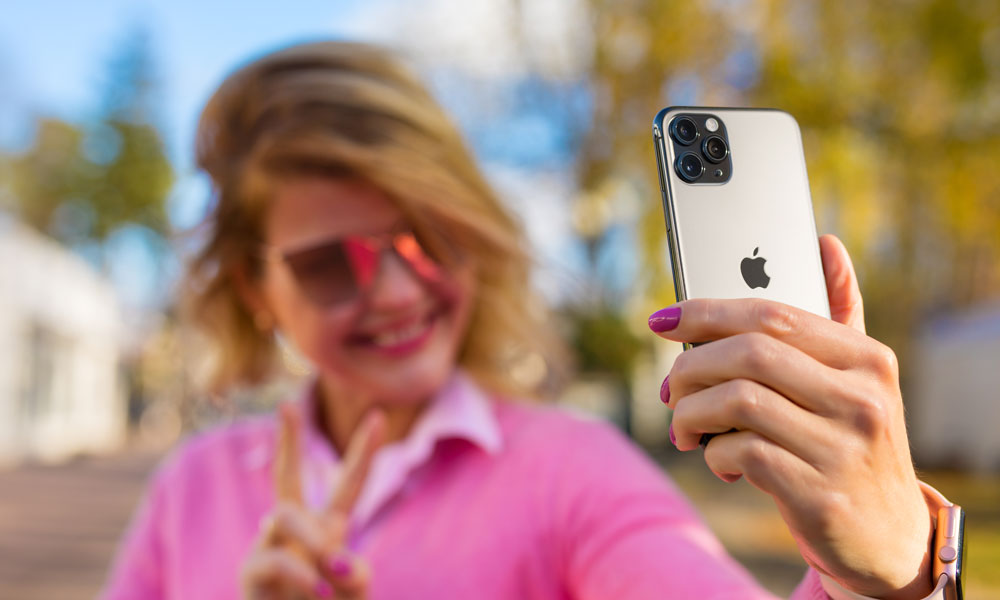The iPhone 17 Could Get a Big Selfie Camera Boost
 Credit: Kicking Studio / Shutterstock
Credit: Kicking Studio / Shutterstock
Toggle Dark Mode
Even though we’re still at least eight months away from the debut of Apple’s iPhone 16, analysts and leakers are already jumping in with reports on what Apple’s 2025 iPhone 17 could hold — and one such change might be the most significant boost to the front camera since the iPhone X.
For the past four years, the specs for the iPhone selfie camera have remained essentially unchanged. The iPhone 14 saw a bump to a larger f/1.9 aperture, but the same 12-megapixel (MP) sensor has been around since the iPhone 11 came along in 2019.
There’s every indication that trend will continue with this year’s iPhone 16, which, by most reports, is focusing on increasing the Ultra Wide lens sensor to 48 megapixels instead.
That might change with next year’s iPhone 17, though. According to analyst Ming-Chi Kuo, Apple is already lining up suppliers for a new front camera, and they’re expected to produce 24MP sensors with a six-element lens.
Kuo shared the information in a post on Medium earlier this week, adding that Apple is expected to use Genius, the same company that’s been pegged to provide the periscope lenses for this year’s iPhone 16 Pro.
The front camera of the iPhone 17 will be upgraded to 24MP/6P lens (vs. the 12MP/5P lens of iPhone 15 & 16), which will significantly improve the image quality. Genius is the primary lens supplier for iPhone front cameras.
Ming-Chi Kuo
To put that in perspective, the iPhone 11 through iPhone 15 all use a 12MP five-element lens for the front camera, with the only difference being the shift from an f/2.2 to an f/1.9 aperture with the iPhone 14. The iPhone 16 will likely use the same configuration.
While Apple has been using TrueDepth cameras with depth sensing since the iPhone X, the early X and XS models only featured a 7MP shooter with an f/2.2 aperture and a four-element lens — the same lens used on the non-TrueDepth-equipped iPhone 7 and iPhone 8.
It’s unclear if Apple plans to use “pixel binning” with the new sensor, which could result in capturing only 12MP photos and using the extra data to improve computational photography. However, with the move to 24MP native shooting on the rear cameras in last year’s iPhone 15 lineup, it seems likely that 24MP will also be the standard resolution for selfies, allowing them to capture more light and detail — and be zoomed in digitally without losing as much. The six-element lens would also help to improve image clarity, capture more light, and reduce chromatic aberrations.
Interestingly, other reports suggest that the iPhone 17 Pro could be the first model to gain under-display Face ID. This was initially supposed to come to the iPhone 16 Pro this year before being rolled out across the entire iPhone 17 lineup; however, it ended up pushed back a year due to sensor issues, suggesting that we won’t see it on the standard models until the iPhone 18 debuts in 2026.
Most analysts expect that Apple will implement this under-display technology in two stages, first moving the TrueDepth emitters and sensors under the display and replacing the pill-shaped Dynamic Island camera array with a more traditional hole-punch camera for the primary image sensor. Hiding the actual selfie camera behind the display and eliminating the cutouts entirely could take until 2026 or 2027.
[The information provided in this article has NOT been confirmed by Apple and may be speculation. Provided details may not be factual. Take all rumors, tech or otherwise, with a grain of salt.]






